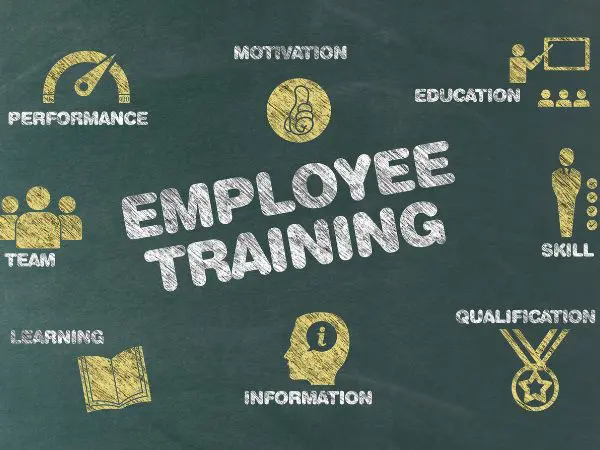Benefits of Employee Training and Development
Gone are the days when rigorous training programs were only reserved for the organization’s C-suite professionals. Today, regular training and development are a must across all levels of a business—and for good reason. Employees are a company’s biggest asset, and investing in their growth eventually pays off in more ways than one.
If your business isn’t thriving, it’s time to check whether you’re paying enough attention to comprehensive training programs. In today’s competitive landscape, the benefits of employee training can simply no longer be understated.
Let’s explore the benefits of employee training and development for your organization’s success:
What is Training & Development for Employees?
Employee training and development means investing resources into helping your team grow and become more efficient at their operations. It helps encourage innovation, boosts their motivation levels, and helps the organization achieve its objectives. Training focuses on improving or teaching skills, whereas development typically prepares employees for future challenges.
According to the Association for Talent Development (ATD), companies that invest in solid training programs see an incredible 218% surge in income per employee than those that don’t. This shows just how essential training can be for a business’s financial future. But it doesn’t just stop here — the benefits of training and development to employees go way beyond just that. Let’s explore them in the next section.
Benefits of Employee Training & Development
Although it’s quite obvious that the benefits of employee training programs go a long way, the question of how exactly it helps the business remains. Statista reveals that last year, corporate training spending in the US went up by $200 million. This highlights that there’s no getting around the need to invest in your team’s growth.
When done right, training has the potential to completely transform your organization’s performance. Let’s discuss how the benefits of employee training help organizations:
1. Optimized Employee Performance
While most businesses don’t focus on it, their team’s dedication and empathy can only take them so far. Today, knowledge can become outdated in the blink of an eye, so investing in continuous learning in the workforce has become more important than ever. If the employees are not given a chance to update their skills, it’s only natural for their performance to decline over time.
However, when companies invest in training and development, they ensure their team members remain sharp and adaptable. Continuous learning helps employees refine their skills, discover new work techniques, and, ultimately, perform their best. This approach equips them to drive the company forward, leading to higher productivity.
2. Improved Job Satisfaction & Morale
One of the biggest mistakes organizations might make is ignoring their employee’s satisfaction with their jobs. When companies overlook this, they risk losing valuable talent, as the workers might feel disengaged and look for opportunities elsewhere.
On the contrary, when employees see that their workplace cares about their success and growth, they’re more committed to work and their morale naturally goes up. However, it’s important to tailor these programs to meet the specific requirements of employees; a one-size-fits-all approach won’t work. If employees notice their development is personalized, they feel more satisfied with their current roles and strive to perform better.
3. Expands Knowledge Sharing
Effective employee training helps break down barriers to information, facilitating the exchange of knowledge across different departments. With everyone having access to the same information, no one is left out or working in isolation. This open flow of information helps different departments better understand the roles of others and the challenges they encounter.
The result? This earning environment within an organization builds a culture of empathy, and cross-functional departments know each other’s goals. In turn, teams get better at communication and cooperation and work together to achieve organizational goals.
4. Better Employee Retention Rate
Sustained business growth requires keeping your best talent on board, which might often be pretty challenging for most organizations. Skilled personnel always have better opportunities to look forward to, so it takes quite some effort to keep them working for your organization.
Fortunately, this is one of the key benefits of employee training and development efforts. Once they know you’re invested in their personal growth, they’re more likely to stay loyal, which reduces their turnover by a huge margin. These programs don’t just improve retention rate but also help your top talent grow more in their current roles.
5. Gives a Competitive Edge
One of the best ways to scale a business is to build a competitive advantage, and there’s no better way to do that than to invest in your employees’ growth. When you prioritize their training and development, you’re helping them acquire the latest skills and knowledge required to stay ahead of the curve. This helps your organization adapt to market changes smoother than ever, giving you the much-needed competitive edge to thrive today.
Additionally, in today’s tight job market, finding qualified workers has gotten as tough as it gets — so it’s best to develop your current workforce. With ongoing training, your team can take on new roles and responsibilities as the market evolves, positioning your business exactly where it needs to be to achieve its objectives.
6. Addresses Performance Gaps
One of the biggest benefits of employee training is that it helps identify and address performance gaps within your team. When employees aren’t meeting their goals, it’s primarily because they lack the required skills, knowledge, or sometimes even motivation. But with targeted training, it’s possible to bridge these performance gaps timely.
For instance, if an employee is grappling with technology struggles, setting up training sessions for him will get him to speed up. As a result, your employees are able to iron out their shortcomings, overcome skill gaps, and drive better results for the organization.
7. Adoption of Modern Industry Techniques
Consistent employee training is the best way to teach your workforce the latest industry techniques and technologies to keep up with the current market demands. With the rapidly evolving business landscape, staying updated is no longer an option — it’s the need of the hour. Regular training ensures your team stays aware of the recent advancements and acts accordingly.
This, ultimately, keeps your organization innovative and competitive, so your clients don’t lose sight of you or shift focus to competitors. Plus, with the latest knowledge of the market, your employees deliver better services and solutions, ending up meeting most of your clients’ expectations.
8. Career Advancement
Among other perks of regular training and development for employees, a fantastic benefit is that it gears up your workers to take up added responsibilities. It trains them to step up and work hard towards promotions — a win-win for both the employees and the organization.
This is especially helpful when you have a vacant position within your company. Your current employees already understand how the business works, so you can train or promote them to bigger roles. For instance, instead of hiring someone new for the management role, it’s way more cost-efficient to train an existing team member with the right potential.
Final Words
In a nutshell, understanding the benefits of employee training and implementing smart training programs can bring huge gains to a company. It’s an excellent chance to motivate your employees and encourage them to join hands with you to work towards the company’s bright future.
On the flip side, employees enjoy being a part of an organization that cares about their growth. So, investing in their training will never go in vain!




